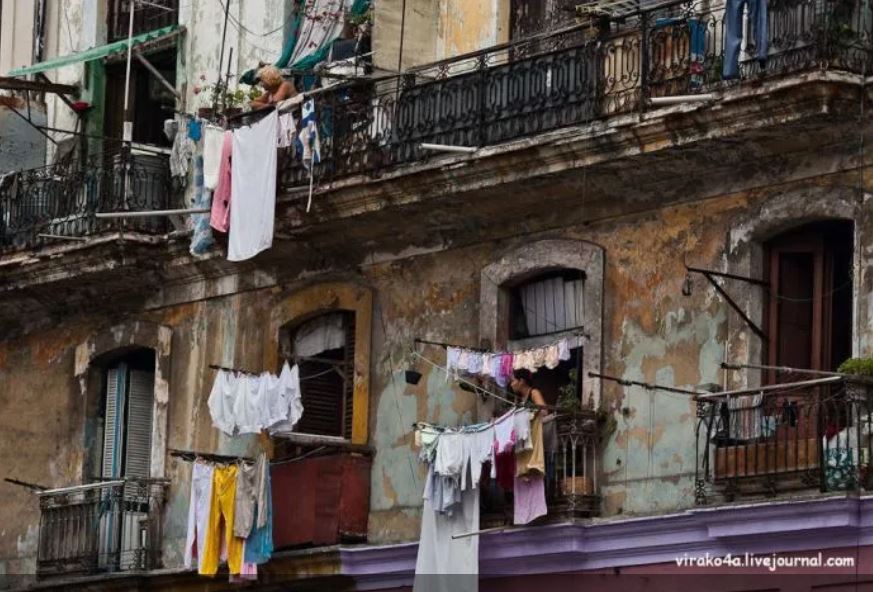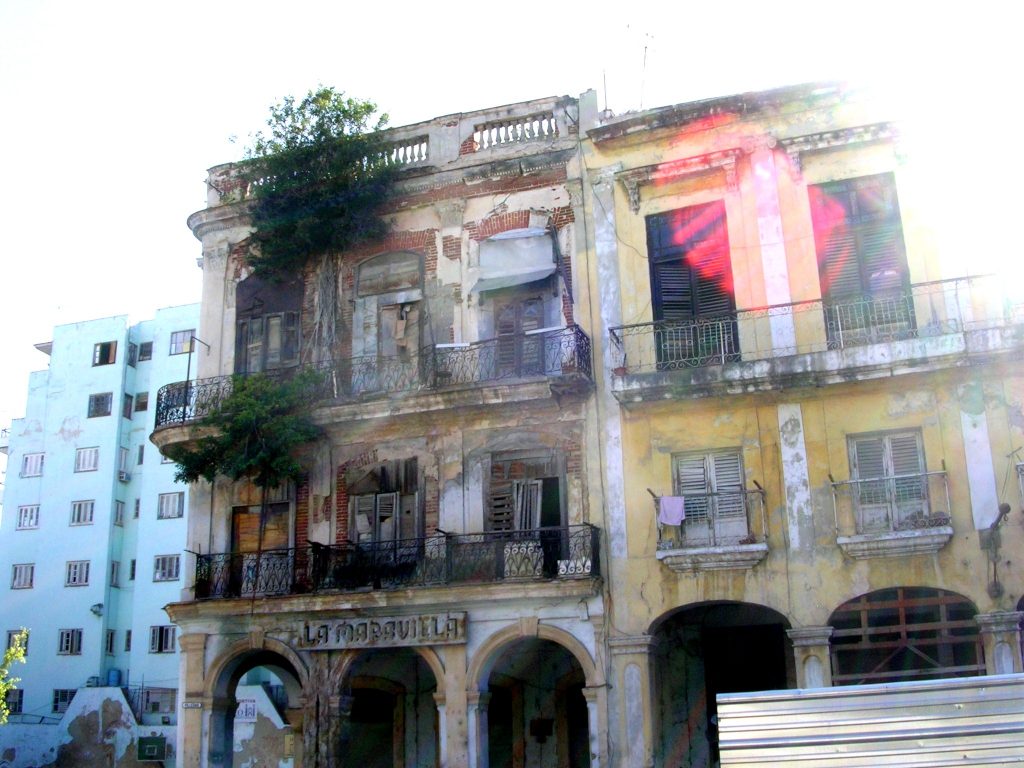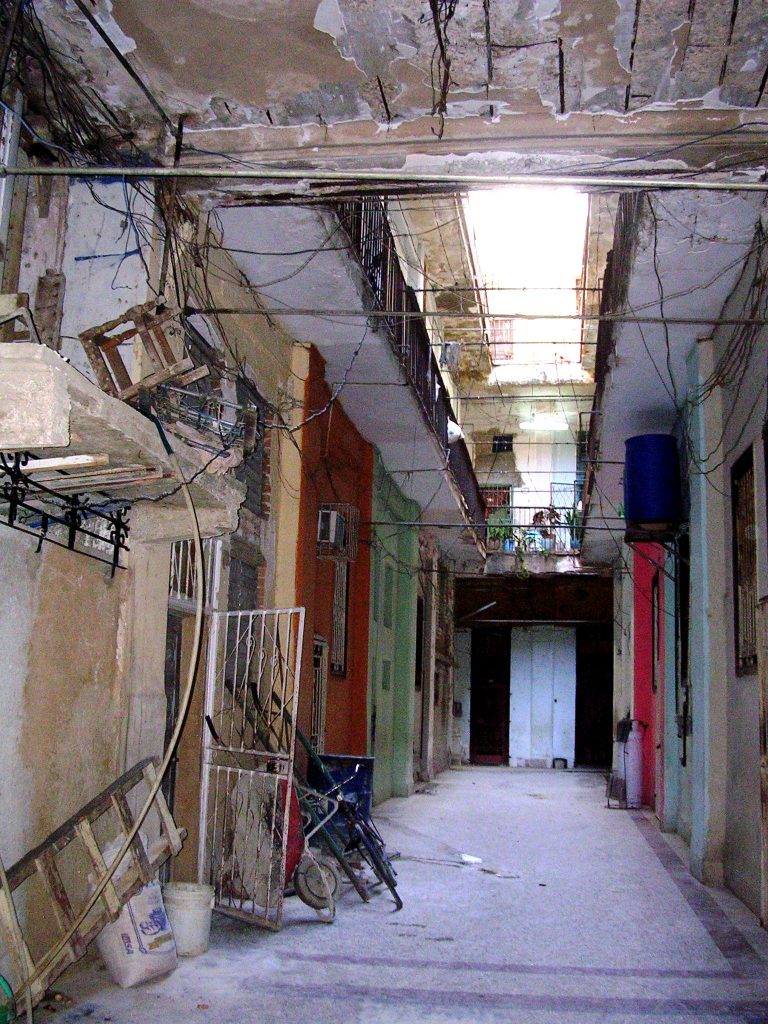
Ivette García González 31 enero 2022
Articulo Original: Pobreza y Desigualdad En Cuba
La pobreza y la desigualdad en Cuba no existen en el discurso oficial, aunque hace tiempo crecen exponencialmente. Al constituir un efecto no deseado de la Revolución, que tuvo como pilares fundamentales la justicia social, la equidad[1] y el desarrollo humano y social; se opta por el silencio.
Son problemáticas muy complejas para los países subdesarrollados, máxime en las condiciones del nuestro. Desde 2015 Naciones Unidas adoptó diecisiete Objetivos de Desarrollo Sostenible a cumplir en 2030. Ellos convocan a eliminar la pobreza, proteger el planeta y garantizar paz y prosperidad para las personas en esa fecha.

La pobreza, de acuerdo con la Dra. Mayra Espina «es un proceso social multidimensional de exclusiones, expropiaciones y carencias múltiples, de imposibilidad de acceder al disfrute de los bienes espirituales y materiales de los cuales dispone una sociedad y, con ello, de desplegar las capacidades humanas individuales y colectivas». De ahí su relación directa con la desigualdad y diversas formas de exclusión social, marginación y grados de vulnerabilidad. Todo ello se manifiesta tanto en sectores sociales específicos, como en los ámbitos laboral, familiar y local. Las consecuencias para la sociedad son múltiples.
Cuba tiene su Plan de Desarrollo al 2030 y un conjunto de documentos rectores de los que se infiere la voluntad política para tratar estos problemas. No obstante, desde antes del 2015 no mejoran los indicadores; por el contrario, se han incrementado el empobrecimiento, los sectores y localidades vulnerables y diversas formas de exclusión.
Hasta los años ochenta, en que contamos con la URSS, Cuba fue un país altamente equitativo. Según expertos, la pobreza como fenómeno social se erradicó. Y lo hizo hasta del lenguaje, en el cual fue sustituida por términos como: «grupos vulnerables», «en desventaja» o «población en riesgo».
El parteaguas, como en muchos otros fenómenos, fue la década del noventa. Entonces colapsó el modelo y sobrevino una profunda crisis, que provocó numerosos impactos económicos y sociales. Cuba no volvería a ser la misma.
Hacia los 2000 la sociedad era más heterogénea y los problemas más agudos. Durante esa primera década del nuevo siglo, el Centro de Investigaciones Psicológicas y Sociológicas (CIPS), identificó entre los problemas que afectaban la equidad a los siguientes: pobreza urbana, marginalización asociada a la migración interna y falta de viviendas, reproducción generacional de desventajas, su concentración a escala espacial, y particular incidencia en mujeres, ancianos, negros y mestizos.
A dicho repertorio se agregaron, de acuerdo con la Dra. María del Carmen Zabala, los relativos a la participación ciudadana; el acceso a un hábitat confortable, a servicios públicos y amparos; la distorsión en cantidad y calidad de la relación trabajo-ingresos y las desventajas para el consumo cultural.
La población urbana en situación de riesgo de pobreza pasó del 6.3 en 1988, al 14.7 en 1996 y al 20% en los 2000; la mayoría con ingresos cercanos a la línea de pobreza. La situación ya era más grave en las zonas rurales y en otras provincias, en particular las orientales.
Tales circunstancias empeoraron desde el 2008, cuando inició el proceso de Actualización del modelo económico y social cubano. Aunque se reconocen algunos impactos positivos, estos son mínimos comparados con los negativos, los cuales abarcan numerosos aspectos en lo económico, social, ambiental, político y cultural. Los ajustes que sobrevinieron entonces funcionaron como detonadores de desigualdades sociales, al profundizar las históricas y generar nuevas.
Vivíamos en una sociedad tan cerrada, que la simple eliminación de algunas prohibiciones absurdas —como la compraventa de casas y carros, alojarse en hoteles, viajar libremente al extranjero o adquirir un celular— aportó una imagen positiva. Sin embargo, a la par, se suprimieron medidas de beneficio social y se inició la tendencia a recortar drásticamente los gastos sociales.
Esas determinaciones afectaron profundamente la equidad e incrementaron la pobreza. Se acrecentó una inmensa brecha entre quienes pudieron aprovechar tales cambios y quienes no tenían ventaja alguna para hacerlo.[2] Un estudio reciente sobre el Centro Histórico de La Habana Vieja, muestra las anomalías y la estratificación a la que se llegó en esa localidad, resultado de la «evasión de las responsabilidades estatales con una población vulnerable».
No se dispone libremente de estadísticas actualizadas sobre pobreza en Cuba, de modo que los fenómenos asociados son difíciles de medir. No obstante, desde los años ochenta las ciencias sociales cubanas aportan diagnósticos y propuestas de políticas para atenderlos: generales, sectoriales, territoriales y de gestión local, familia, grupos sociales específicos como los jóvenes, personas de la tercera edad y mujeres; así como políticas de equidad.
En varios de los estudios realizados se revelan aspectos que tienen que ver directamente con el modelo de sociedad y constituyen las razones de que en el país se continúe reproduciendo la pobreza: lentitud y falta de integralidad y sincronización de las reformas, limitada descentralización y gestión local, escasa implementación de políticas focalizadas según sectores y regiones vulnerables, así como la persistencia del enfoque asistencialista en lugar del empoderamiento de la ciudadanía.
En octubre del 2020, el destacado sociólogo cubano Juan Valdés Paz argumentó que en este escenario de reformas nos movemos «hacia un mayor patrón de desigualdad (…) tenemos cada vez más pobres». Según el Coeficiente Gini —herramienta analítica empleada para medir la desigualdad en los ingresos— hemos remontado desde un 0.22-0.25 en 1986, a más del 0.40 en 2019, y para el 2025 se preveía que llegara a no menos de 0.45. No obstante, desde fines del año pasado, algunos expertos estiman que ese valor ya fue superado.
Los ritmos, vaivenes y contenidos de las reformas han sido desfavorables para la ciudadanía y empeoraron desde el 2015. Junto a ello, la no implementación de políticas dirigidas a combatir la pobreza nos hicieron llegar al escenario 2020-2021 en condiciones de crisis y alta vulnerabilidad, como fundamentó recientemente la Dra. Alina López.
Trabajar por la erradicación de la pobreza en Cuba implica llegar a la raíz de los problemas, modificar las relaciones sociales promoviendo democracia desde la economía, con una real participación ciudadana en todos los procesos. Eso incluye transparentar y revisar los gastos del enorme aparato burocrático estatal, partidista, de las organizaciones que sirven al gobierno y de las fuerzas represivas; todos con estructuras verticales que pagamos los ciudadanos.
Hoy los indicadores económicos y sociales van cuesta abajo, mientras la opacidad habitual del gobierno no permite a la ciudadanía estar debidamente informada. Pocos en Cuba conocieron las causas reales del colapso socialista europeo. Otros interpretaron por nosotros y transmitieron sus conclusiones, así, las mayorías no pudieron prever el futuro que nos esperaba. Ya estamos en él.
No asumir tales anomalías, ocultarlas; descubrirlas en visitas gubernamentales y maquillarlas con programas emergentes de un populismo rampante, al calor de acontecimientos políticos indeseados por el gobierno; dilata soluciones verdaderamente sostenibles. Los Objetivos de Desarrollo Sostenible 2030 de la ONU pretenden «no dejar a nadie atrás»; en Cuba cada día dejamos más personas afuera y detrás.
Para contactar a la autora: ivettegarciagonzalez@gmail.com
***
[1] Durante mucho tiempo en Cuba una de las principales distorsiones estuvo en la asunción de la equidad como igualdad, y en política el conocido «igualitarismo», lo que también provocó numerosos efectos negativos que llegan hasta hoy.
[2] Esta particular coyuntura entre el 2008 y el 2015 aproximadamente, se examinará en textos posteriores como parte del proyecto de La Joven Cuba sobre desigualdades, pobreza y sectores vulnerables.



